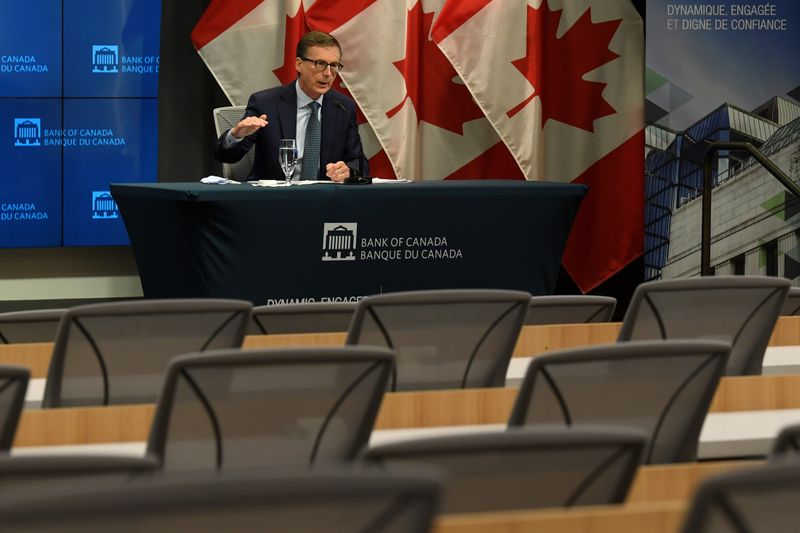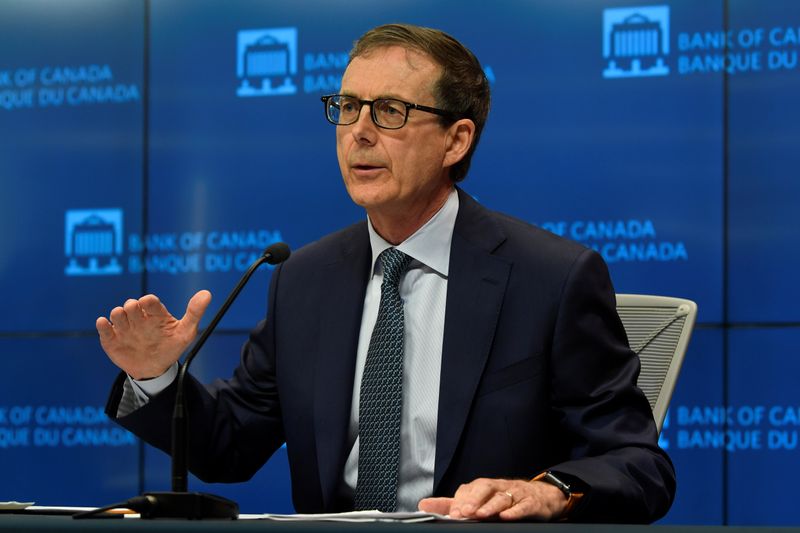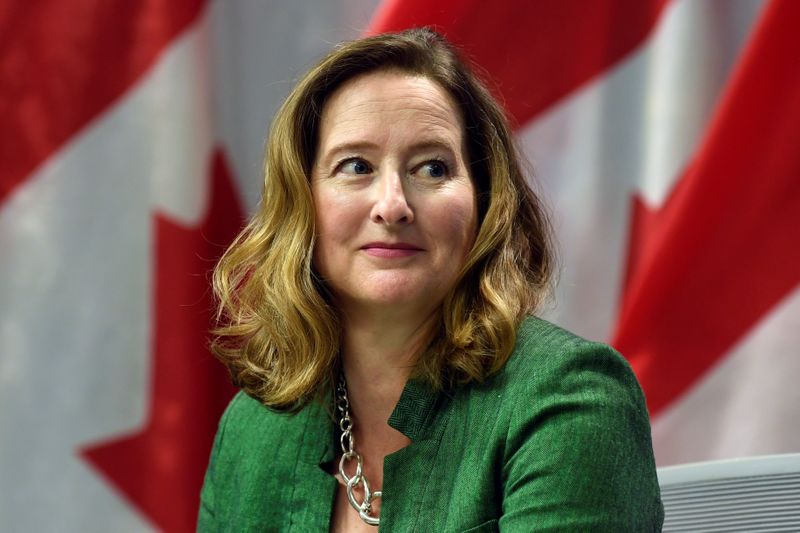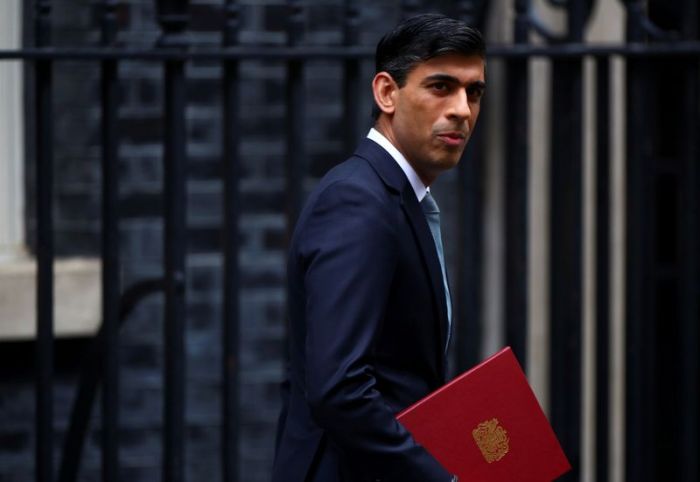OTTAWA (Reuters) – Canada’s economic activity will not return to pre-pandemic levels until 2022 and interest rates will remain low for at least two years, the Bank of Canada said on Wednesday, as it again held its key overnight rate steady.
The central bank sees a long, slow recovery and will keep its quantitative easing programs in place until that recovery is “well under way,” Bank of Canada Governor Tiff Macklem told reporters after the decision.
“We recognize that households and businesses are facing an unusual amount of uncertainty. Against that background, we are being unusually clear that interest rates are going to be low for a long time,” Macklem said.
The central bank said it would leave interest rates on hold until the 2% inflation target is sustainably achieved, which it does not expect until at least 2023.
Macklem later told Bloomberg the bank’s outlook implied its key overnight rate would likely stay at its effective lower bound of 0.25% for “at least two years.”
Canada also faces fallout from a dimming outlook for an economic recovery in the United States. A rapid rise in cases of the new coronavirus in the U.S., Canada’s largest trading partner, will impact Canadian exports, Macklem said.
“In the last couple of weeks with the rapid rise of cases of coronavirus in the U.S., we did take down our U.S. projection,” he said. “That does spill back into Canada.”
The Bank of Canada released a central scenario earlier on Wednesday that showed U.S. real gross domestic product falling 8.1% in 2020 and rising 3.4% in 2021. Canada GDP is projected to fall 7.8% in 2020, then rise 5.1% in 2021, and reach pre-pandemic levels in early 2022.
The central bank said that after an initial bounce, Canada’s economic growth will slow amid the effects of social distancing, subdued consumer and business confidence, and “a slow rebound in foreign demand.”
Globally, the bank’s outlook assumes the pandemic will have largely run its course by mid-2022, though much uncertainty remains in the interim as well as an ongoing risk of regional flare-ups.
“Overall, the risks appear to be tilted to the downside, largely because of the potential for a second wave of the virus,” the central bank said.
A second wave requiring a broad-based lockdown in Canada and globally would impact the Bank of Canada’s central scenario outlook, Macklem said.
“We’d be well below the central scenario and that would imply we would need more monetary policy stimulus to get back to our inflation target,” he said.
The bank slashed rates three times in March, to 0.25%, and launched its first-ever large-scale asset purchase program. It held rates at 0.25% on Wednesday.
“They’ve made it pretty clear that they’re going to keep the pedal to the metal in terms of easy policy until the economy has recovered,” said Doug Porter, chief economist at BMO Capital Markets.
The Canadian dollar strengthened to a six-day high at 1.3518 per U.S. dollar, or 73.98 U.S. cents, helped by optimism about a coronavirus vaccine.
(Reporting by Kelsey Johnson and Julie Gordon in Ottawa; Additional reporting by Fergal Smith, Jeff Lewis, Nichola Saminather and Moira Warburton in Toronto, Steve Scherer in Ottawa; Editing by Bernadette Baum and Leslie Adler)























